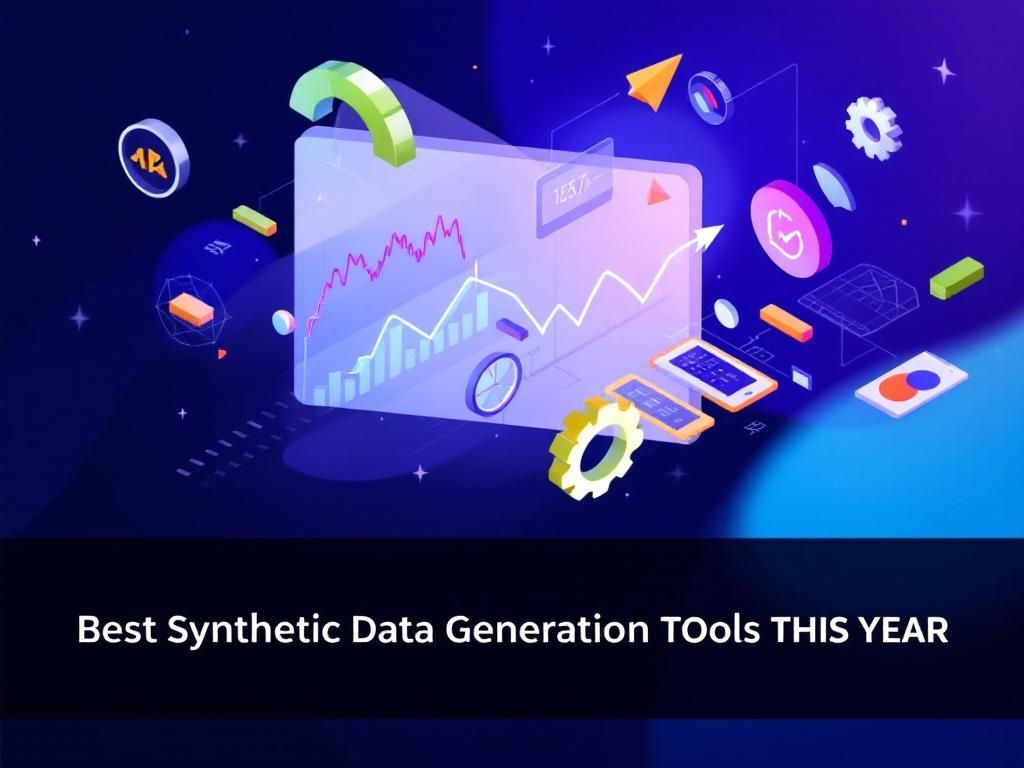As organizations increasingly rely on data to drive decision-making, the demand for high-quality datasets has surged. However, acquiring real-world data can be challenging due to privacy concerns, scarcity, or cost. Enter synthetic data generation tools—technologies designed to create artificial data that mimics real-world datasets. These tools provide a viable solution for training machine learning models while preserving privacy and reducing biases. This article will explore some of the best synthetic data generation tools available this year, their features, and how they can benefit different industries.
Understanding Synthetic Data
Synthetic data is generated algorithmically rather than obtained from direct measurement. It can be used in various applications, including machine learning, artificial intelligence, and software testing. Here are key features that define synthetic data:
- Privacy Preservation: Synthetic data can be created without risking the exposure of sensitive information, making it ideal for industries like healthcare and finance.
- Diversity: It can simulate various scenarios or edge cases that may not be covered in available real-world data.
- Cost-effective: Generating synthetic data can be more cost-effective than collecting and annotating large datasets.
- Scalability: It can be scaled to meet the needs of different projects, ensuring that you have access to the right amount of data.
Top Synthetic Data Generation Tools
1. Synthea
Synthea is an open-source synthetic patient generator. It produces comprehensive, realistic patient records based on real-world clinical data.
Key Features:
- Generates synthetic electronic health records (EHRs).
- Supports multiple demographic and clinical scenarios.
- Includes a realistic timeline of patient encounters.
2. Hazy
Hazy focuses on creating high-quality synthetic data while ensuring privacy. It uses machine learning techniques to generate data that reflects real-world datasets.
Key Features:
- Customizable data generation to fit specific needs.
- Supports various data types, including tabular and transactional data.
- Data is statistically representative of real datasets.
3. DataGen
DataGen specializes in generating synthetic data for computer vision and deep learning applications. It produces labeled images and videos for training machine learning models.
Key Features:
- Allows users to create diverse environments and scenarios.
- Provides detailed annotations for generated data.
- Offers an easy-to-use interface for customization.
4. Mostly AI
Mostly AI is designed for creating synthetic data with a strong focus on privacy and compliance. It helps organizations generate data that complies with regulations like GDPR and HIPAA.
Key Features:
- Generates realistic, privacy-preserving datasets.
- Enables users to create complex relationships in data.
- Offers integration with existing data pipelines.
5. Tonic.ai
Tonic.ai provides a powerful platform for generating synthetic data suitable for analytics and application development. It allows organizations to create datasets that mirror production data without exposing sensitive information.
Key Features:
- Supports various data formats and types.
- Offers a wide range of data transformation options.
- Enables rapid data generation and testing.
Choosing the Right Tool for Your Needs
When selecting a synthetic data generation tool, consider the following criteria:
1. Use Case
Your specific requirements will dictate which tool is best suited for your needs. For example:
- If you need data for healthcare applications, tools like Synthea or Mostly AI may be more relevant.
- For computer vision tasks, DataGen would be the preferred choice.
2. Data Complexity
Some tools excel in generating simple data, while others can create complex datasets with intricate relationships. Choose a tool that matches the complexity of the data you need.
3. Integration Capabilities
Consider how well the tool integrates with your existing systems. Tools with robust APIs and compatibility with data pipelines can save you time and resources.
4. Scalability
The ability to scale data generation to accommodate larger or changing needs is crucial. Ensure that the tool you choose can handle the volume of data you anticipate needing.
Real-World Applications of Synthetic Data
Synthetic data generation tools have found applications across various industries, including:
1. Healthcare
In healthcare, organizations use synthetic data to:
- Train machine learning models for diagnostics and treatment predictions.
- Test healthcare applications without exposing real patient data.
- Conduct research without the ethical implications of using real patient records.
2. Finance
In the finance sector, synthetic data is utilized for:
- Risk assessment and fraud detection models.
- Creating customer profiles for targeted marketing without compromising privacy.
- Testing financial applications in a simulated environment.
3. Retail
Retailers use synthetic data to:
- Model customer behavior and improve inventory management.
- Generate customer transaction data for testing e-commerce platforms.
- Analyze purchasing patterns and trends without using real customer data.
Challenges and Considerations
While synthetic data generation tools offer numerous benefits, challenges remain:
1. Data Quality
The quality of synthetic data must be high enough to ensure that models trained on it are effective. Poor-quality synthetic data can lead to inaccurate models and predictions.
2. Bias Mitigation
Ensuring that synthetic data does not perpetuate biases present in real data is a critical consideration. Tools must incorporate methods to analyze and mitigate biases in the generated datasets.
3. Validation
Validating the effectiveness of synthetic data for the intended applications is essential. Organizations should conduct thorough testing to confirm that models trained on synthetic data perform as expected.
Conclusion
Synthetic data generation is revolutionizing the way organizations utilize data for machine learning and AI applications. By providing a cost-effective, privacy-preserving alternative to real-world datasets, these tools are paving the way for innovation across various sectors. As the technology continues to evolve, staying informed about the best synthetic data generation tools is crucial for leveraging their full potential in your projects.
FAQ
What are synthetic data generation tools?
Synthetic data generation tools are software applications that create artificial datasets that mimic real-world data for various purposes such as testing, training machine learning models, and enhancing data privacy.
Why should I use synthetic data instead of real data?
Using synthetic data reduces privacy risks and compliance issues associated with real data, allows for the generation of large datasets when real data is scarce, and enables testing of algorithms in controlled scenarios.
What are some of the best synthetic data generation tools available in 2023?
Some of the best synthetic data generation tools in 2023 include Synthea, Mostly AI, DataGen, Hazy, and Gretel.ai, known for their robust features and ease of use.
Is synthetic data as reliable as real data?
While synthetic data can closely resemble real data, its reliability depends on the algorithms used for generation. High-quality synthetic data can provide valuable insights, but it should be validated against real-world scenarios.
Can synthetic data be used for training machine learning models?
Yes, synthetic data is commonly used for training machine learning models, especially when real data is limited or difficult to obtain, allowing for diverse training scenarios and improving model robustness.
How do I choose the right synthetic data generation tool for my needs?
To choose the right synthetic data generation tool, consider factors such as the specific use case, the quality of data required, ease of integration, customization options, and the tool’s ability to handle the type of data you work with.




